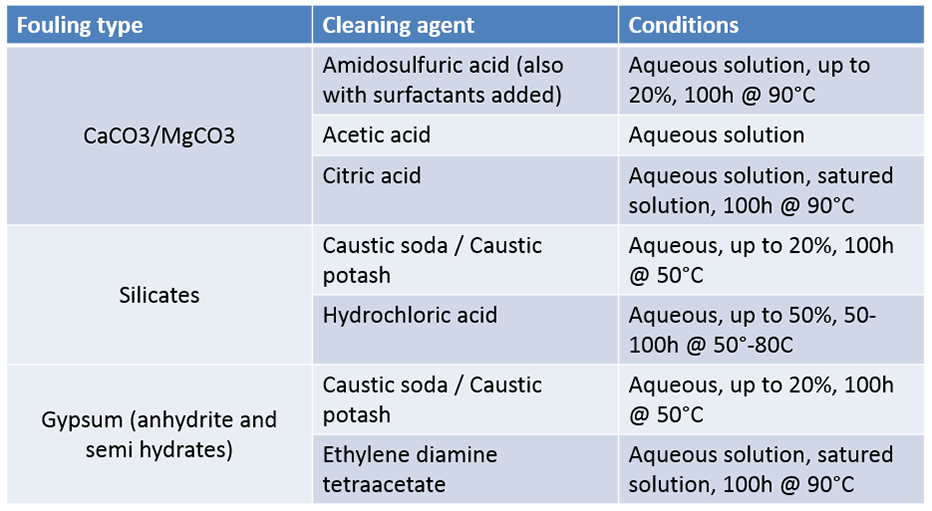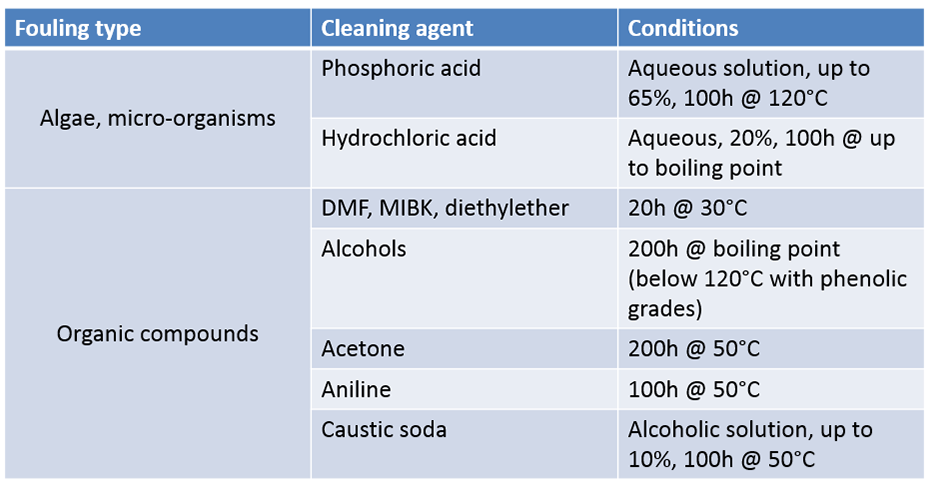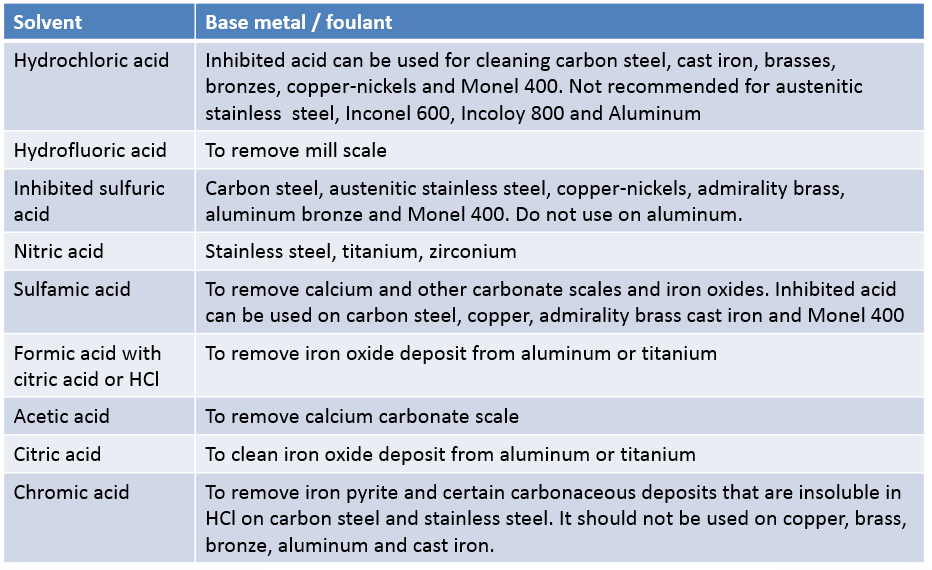
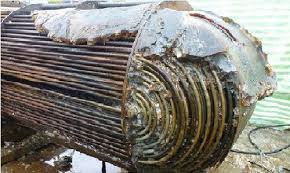

Fouling is an accumulation and formation of unwanted materials on the surface of processing equipment. It is one of the most important problem in heat transfer equipment.
This is an extremely complex phenomenon.
It could be divided on 2 classes
Inorganic materials
- Airborne dust and grit
- Waterborne mud and silts
- Calcium and magnesium salts
- Iron oxide
Organic materials
- Biological substances
- Oils, waxes and greases
- Polymer, tars
- Carbon
Fouling cost affect capital and operating costs
- Extra surface required for heat exchangers
- Energy losses (steam, pump power)
- Production losses (shut down period)
- Maintenance costs
The process of fouling could be:
- Particulate fouling
- Crystallization or precipitation fouling
- Chemical reaction fouling
- Heat transfer surface act as a catalyst for chemical reaction
- Corrosion fouling
- reaction between heat transfer surface and the fluid
- Biological fouling
- Micro-organism attached to the heat transfer surface
- Solidification or freezing fouling
- Heat transfer surface temperature under fluid solidification temperature
The fouling is controlled by equilibrium between deposit and removal of foulant.
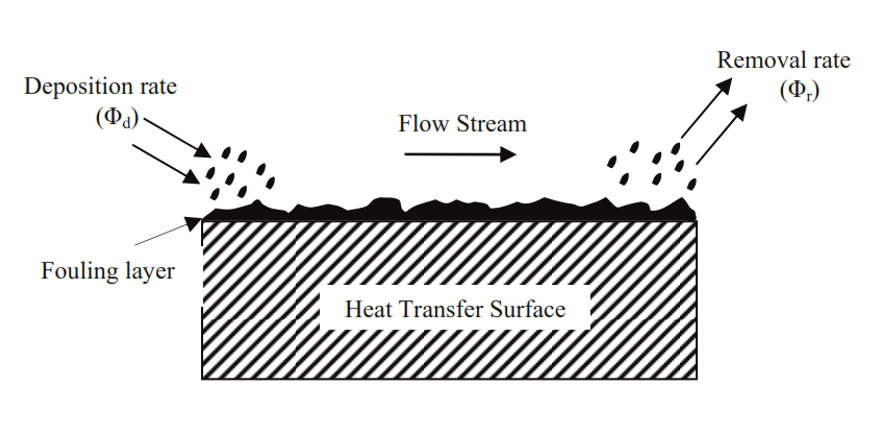
The evolution of the thermal resistance on the surface could be modelized according several models
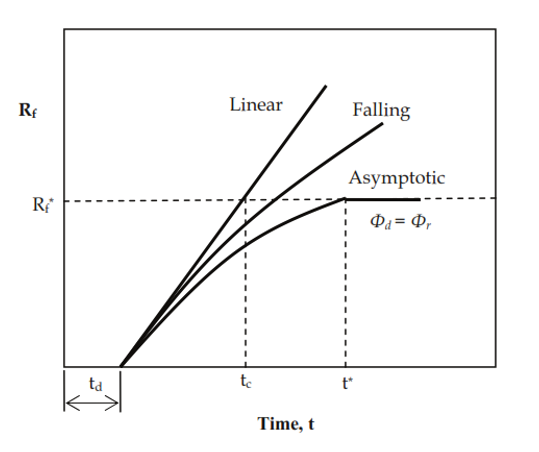
Each type of foulant has different thermal conductivity.
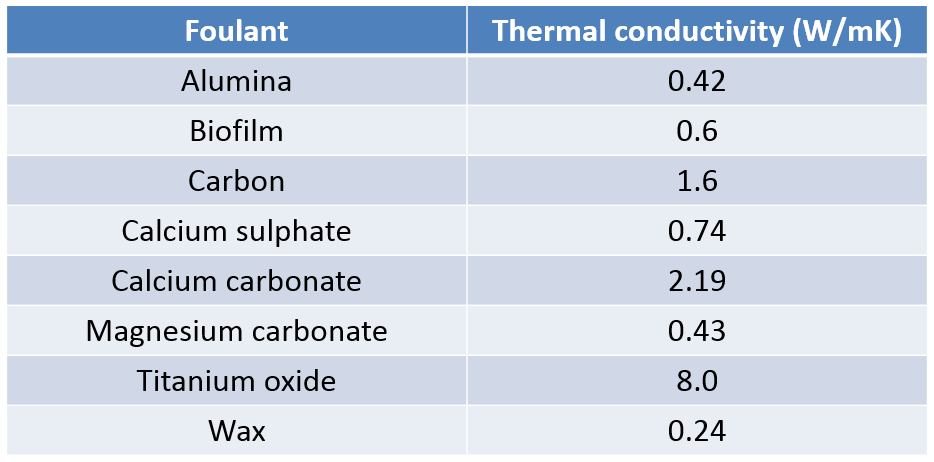
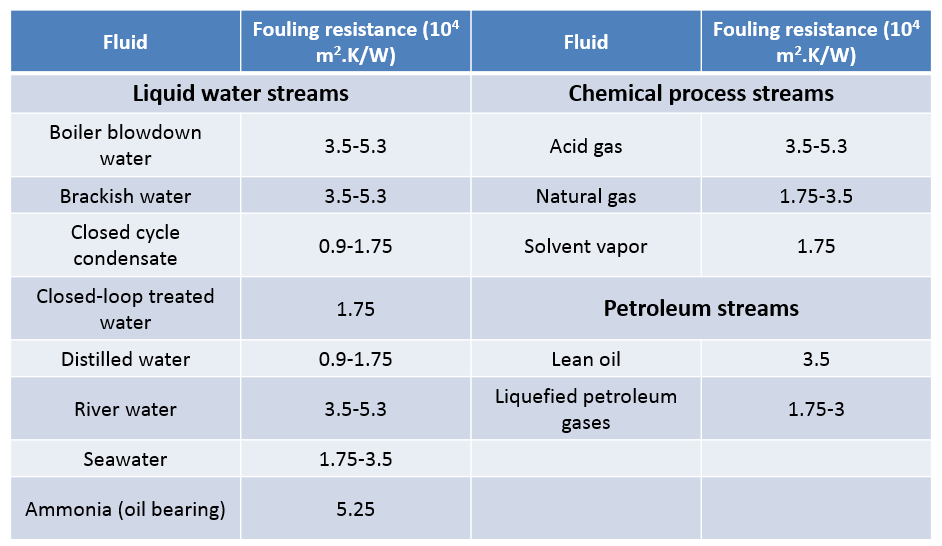
The main parameters on the fouling process are:
- Fluid flow velocity
- Strong effect. The higher the velocity, the lower fouling rate
- Surface temperature
- Not well defined (generally if temperature rise = more fouling)
- Surface material (energy of surface)
- Significant effect
- Surface roughness
- Better surface finish delay fouling and ease cleaning
- Fluid properties
- Viscosity play important role (lower viscosity lead to slower fouling)
- Impurities and suspended solids
- It is economical to install upstream filtration
- Heat transfer process
- Fouling vary for cooling, heating, boiling, condensing
- Design consideration
- Place the more fouling fluid on tube side
Fouling can lead to a corrosion process underneath the fouling layer. That is the reason why equipment designed with lower temperature corrosion resistance than the hot service side can lead to early corrosion and reduce lifetime of equipment.
Here under a comparison of the level of temperature underneath the foulant layer between a clean case graphite and a fouled graphite. Service side with steam heating a media to 140°C on process side.
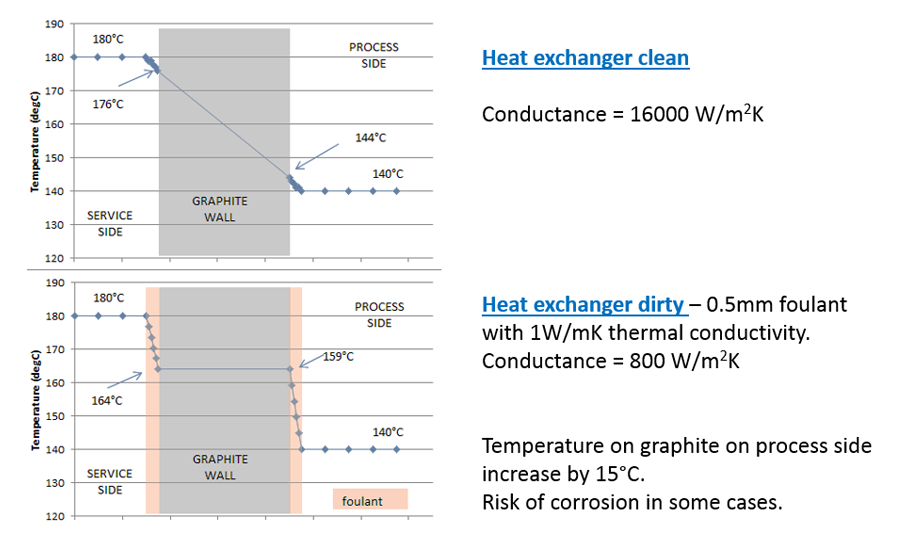
Methods to clean heat exchangers
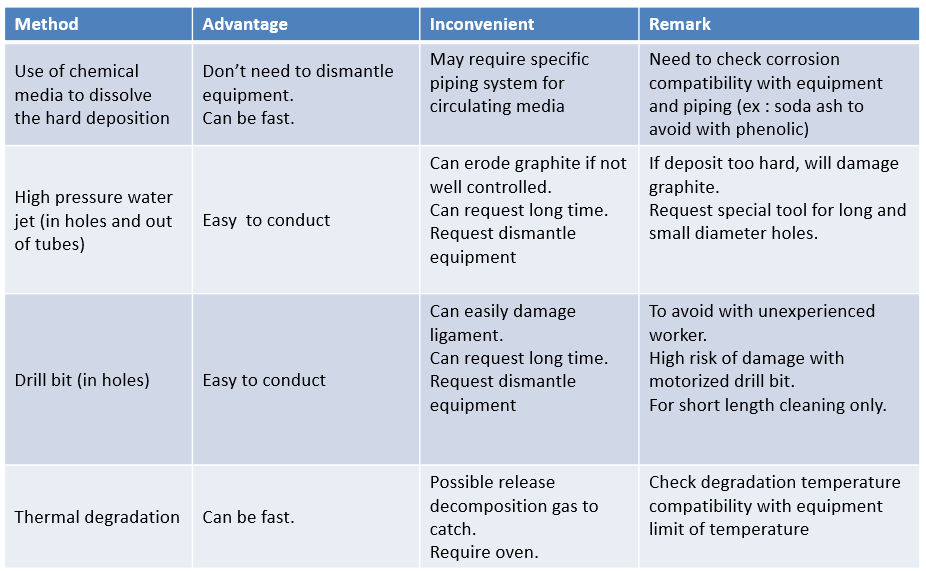
Chemical cleaning methods
Ensure that all materials in contact with the chemical cleaning media is compatible prior to proceed.
